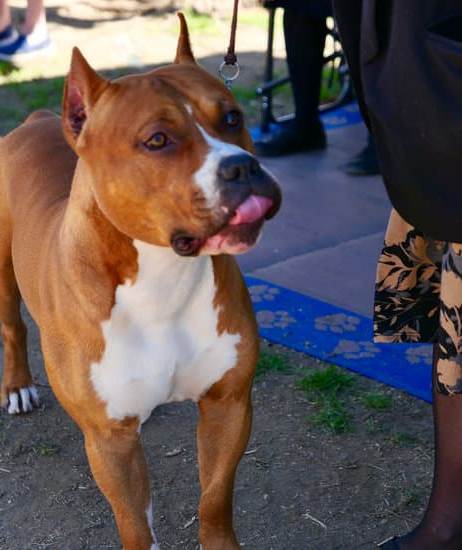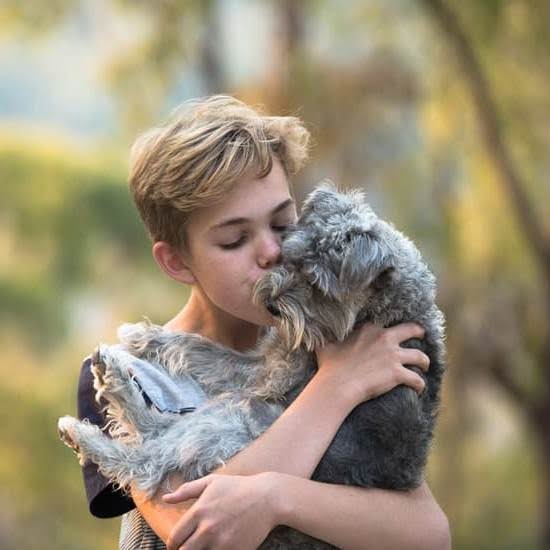Are you struggling with getting your dog to respond to the stop whistle command? In this article, we will delve into the essential steps on how to train a dog to the stop whistle and ensure a successful outcome. The stop whistle command is a crucial tool for maintaining control and keeping your dog safe in various situations.
The stop whistle can be a lifesaver when it comes to keeping your dog out of harm’s way or preventing them from engaging in undesirable behaviors. It provides an effective way to get your dog’s attention and bring them back to you, especially during off-leash activities. Understanding the significance of this particular command is the first step towards successful training.
Choosing the right type of whistle is important for effective training. We will discuss different types of whistles available for dog training and provide guidance on selecting one that suits your dog’s specific needs. Additionally, introducing basic obedience commands plays an essential role in preparing your dog for successful stop whistle training. In our next section, we will cover these fundamental commands and why they are crucial for overall obedience.
Choosing the Right Whistle
When it comes to training your dog to respond to the stop whistle command, choosing the right whistle is crucial. There are different types of dog training whistles available, and selecting the one that’s suitable for your dog’s training needs can make a significant difference in the effectiveness of the training process.
Types of Dog Training Whistles
There are various types of dog training whistles, including traditional whistles, silent whistles, and electronic whistles. Traditional whistles produce a audible sound that can be heard by the human ear and also by dogs. Silent whistles emit a high-pitched sound that is only audible to dogs, making them ideal for training in public spaces where loud noises may be disruptive. Electronic whistles offer adjustable frequencies and volumes, providing versatility in training different breeds and temperaments of dogs.
Selecting the Right Whistle for Your Dog
When selecting a whistle for your dog’s training needs, consider factors such as your dog’s hearing abilities, sensitivity to noise, and ease of use for you as the trainer. It’s essential to choose a whistle that is comfortable for you to carry and use consistently during training sessions. Additionally, consider seeking guidance from professional trainers or veterinarians who can provide recommendations based on your dog’s breed and individual characteristics.
Testing Different Whistles
Before committing to a specific whistle for your dog’s training, it can be beneficial to test out different types of whistles to see how your dog responds. Some dogs may have a strong reaction to certain frequencies or pitches emitted by a particular type of whistle, so experimenting with different options can help you determine which one is most effective in getting your dog’s attention and reinforcing the stop whistle command.
Introduction to Basic Obedience Training
Basic obedience training is the foundation for successfully teaching your dog to respond to the stop whistle command. It is essential for building a strong communication and trust between you and your canine companion. Here are some important basic obedience commands that are fundamental for stop whistle training:
- Sit: Teaching your dog to sit on command is not only a useful behavior, but it also sets the groundwork for more advanced training. It helps to instill focus and impulse control in your dog.
- Stay: The “stay” command teaches your dog to remain in one place until released, which is crucial for their safety and obedience. It also encourages discipline and patience in your pet.
- Come: The “come” command is vital for calling your dog back to you, especially in emergency situations. It is essential for off-leash control and reinforces the bond between you and your pet.
Incorporating these basic obedience commands into your daily routine will not only make stop whistle training more effective but also improve your overall relationship with your dog. Consistent practice with these commands will lay a strong foundation for more advanced training techniques.
An important aspect of basic obedience training is using positive reinforcement, such as treats, praise, or toys, to encourage desired behaviors. This form of training strengthens the desired actions while maintaining a harmonious relationship with your pet. By focusing on positive reinforcement methods, you can create a rewarding and enjoyable experience for both you and your dog during training sessions.
Preparing for Training
Before diving into the actual training process, it’s important to ensure that you create a conducive environment for your dog’s stop whistle training. This includes minimizing distractions, finding a quiet and safe training area, and making sure that your dog is mentally and physically prepared for the training sessions.
Creating a Conducive Training Environment
When preparing for stop whistle training, it’s crucial to choose a quiet and familiar environment where your dog can focus without being easily distracted. A fenced yard or an empty park can be ideal locations to conduct the training, as they provide enough space for your dog to move around while minimizing external disturbances.
Additionally, make sure that the weather conditions are suitable for training. Extreme heat or cold can affect your dog’s performance, so aim to train during milder temperatures. It’s also essential to keep the training sessions short and sweet to maintain your dog’s interest and motivation.
Getting Your Dog Mentally and Physically Ready
Before starting stop whistle training, ensure that your dog is mentally and physically ready for the session. This may involve engaging in some light play or exercise with your dog to help them release any excess energy and anxiety. Mental stimulation activities such as puzzle toys or obedience drills can also help get your dog in the right frame of mind for learning.
Moreover, make sure that your dog is comfortable wearing their collar or harness where you’ll attach the whistle. Familiarizing them with these accessories will prevent any unnecessary discomfort during the training process. By taking these preparatory steps, you can set a solid foundation for successful stop whistle training with your dog.
Step-by-Step Training Process
Training your dog to respond to the stop whistle command requires patience, consistency, and a clear understanding of the training process. Below are the steps to help you successfully train your dog with the stop whistle command:
- Introducing the whistle: Before you start training your dog with the stop whistle command, it’s important to introduce the whistle in a positive way. Allow your dog to become familiar with the sound of the whistle by associating it with something pleasant such as treats or playtime.
- Teaching the command: Once your dog is comfortable with the sound of the whistle, it’s time to teach them what it means. Start by blowing the whistle and immediately rewarding your dog when they look at you or come towards you. Repeat this several times until your dog understands that the sound of the whistle means they should pay attention to you.
- Reinforcing the behavior: Consistency is key when reinforcing the stop whistle command. Practice in different environments and gradually increase distractions. Always reward your dog for responding correctly to ensure that they understand and obey the command regardless of external factors.
By breaking down the training process into manageable steps and being patient and consistent, you can effectively train your dog to respond to the stop whistle command. Remember that every dog learns at their own pace, so be sure to tailor your training approach to suit your dog’s individual needs and capabilities.
With dedication and perseverance, you will soon have a well-trained canine companion who responds reliably to your stop whistle command in various situations.
Troubleshooting Common Challenges
First, it’s important to ensure that your dog fully understands what the stop whistle command means. In some cases, dogs may simply not comprehend what is expected of them when they hear the whistle. To address this, you may need to revisit the basics of obedience training and reinforce the meaning of the stop whistle command through consistent repetition and positive reinforcement.
Another common challenge is when a dog only responds to the stop whistle command in certain situations or environments but seems to ignore it in others. This can be due to a lack of generalization on the part of your dog.
Generalization refers to a dog’s ability to understand that a command applies across different contexts. To help your dog generalize the stop whistle command, practice training in various locations with differing levels of distraction, gradually increasing the level of difficulty as your dog becomes more proficient at responding.
Additionally, some dogs may exhibit fearful or anxious behaviors when they hear the stop whistle, especially if they associate it with punishment or negative experiences. If your dog demonstrates signs of fear or reluctance when responding to the whistle, it’s essential to approach training with patience and reassurance. Building trust and creating positive associations with the stop whistle through rewards and encouragement can help alleviate fear-related issues.
Understanding these common challenges and implementing effective solutions will contribute significantly towards successful stop whistle training for your furry companion.
| Common Challenge | Solution |
|---|---|
| Dog ignoring the stop whistle command | Revisit obedience training basics; reinforce meaning through repetition and positive reinforcement |
| Dog only responding in specific situations/environments | Practice in various locations with differing distractions; focus on generalization |
| Fearful/anxious behavior towards the stop whistle | Approach training with patience; create positive associations through rewards and encouragement |
Advanced Training Techniques
The stop whistle command is a vital tool in off-leash dog training, as it provides a way to quickly get your dog’s attention and call them back to you when needed. However, simply introducing the stop whistle command is not enough – it’s important to explore advanced training techniques to improve your dog’s response to this command.
One advanced technique to enhance your dog’s response to the stop whistle command is by incorporating distance work into their training. As your dog becomes more proficient at responding to the stop whistle at close range, gradually increase the distance between you and your dog when using the command. This will help strengthen their understanding of the command and ensure they respond reliably, even when they are farther away from you.
Another advanced technique involves adding distractions into your dog’s training sessions. Introducing distractions such as other dogs, wildlife, or enticing scents can help reinforce your dog’s response to the stop whistle command in real-world scenarios. By gradually exposing your dog to distractions during training and teaching them to focus on you despite these distractions, they will be better prepared to respond effectively when faced with similar situations outside of training.
It’s essential to remember that advanced training techniques should be introduced gradually and with patience. Rushing through these techniques can lead to confusion for your dog and may result in setbacks in their training progress. Consistent practice, positive reinforcement, and patience are key elements in successfully incorporating these advanced techniques into your dog’s stop whistle training.
| Advanced Training Techniques | Benefits |
|---|---|
| Incorporating distance work | Strengthens understanding of the command |
| Including distractions in training | Reinforces response in real-world scenarios |
Putting the Command to the Test
In conclusion, training a dog to respond to the stop whistle command is an essential skill that can benefit both the dog and its owner. By understanding the importance of the command and choosing the right whistle for training, owners can set themselves up for success in teaching their dogs this valuable skill. Additionally, introducing basic obedience training before embarking on stop whistle training will provide a solid foundation for the process.
Once the groundwork has been laid, preparing for training by creating a conducive environment and mentally and physically preparing your dog is crucial. The step-by-step training process, as well as troubleshooting common challenges, will help ensure that the training is effective and successful. Furthermore, exploring advanced techniques and putting the command to the test in real-life scenarios will further reinforce your dog’s response to the stop whistle command.
It’s important to remember that every dog is unique, so patience and consistency are key during this training process. With dedication and perseverance, both owners and their dogs can achieve a successful outcome in mastering the stop whistle command. By following these guidelines and being proactive in addressing any issues that may arise during training, owners can enjoy having a well-trained and responsive canine companion.
Frequently Asked Questions
How Do I Get My Dog to Stop Whistling?
To get your dog to stop whistling, you can start by identifying the trigger for the behavior. Once you understand what prompts the whistling, you can work on redirecting your dog’s attention.
You can also try using positive reinforcement techniques to encourage alternate behaviors, such as sitting or staying quiet. Consistency and patience are key in training your dog to stop whistling.
Is Whistle Training Good for Dogs?
Whistle training can be very effective for dogs, as they are able to pick up on the sound of a whistle quite easily. Using a whistle as a form of communication with your dog can be beneficial for activities like recall training or signaling specific commands during outdoor activities like hunting or agility training.
It’s important to use the whistle consistently and pair it with positive reinforcement to achieve the best results.
Do Dog Whistles Make Dogs Stop?
Dog whistles can help in getting a dog’s attention and stopping certain behaviors, but they are not a magical solution that will instantly make a dog stop doing something. The effectiveness of a dog whistle depends on how it is used and the individual dog’s response to it.
Some dogs may be more responsive to a whistle than others, and it’s important to pair its use with consistent training and positive reinforcement for desired behaviors.

Welcome to the blog! I am a professional dog trainer and have been working with dogs for many years. In this blog, I will be discussing various topics related to dog training, including tips, tricks, and advice. I hope you find this information helpful and informative. Thanks for reading!





